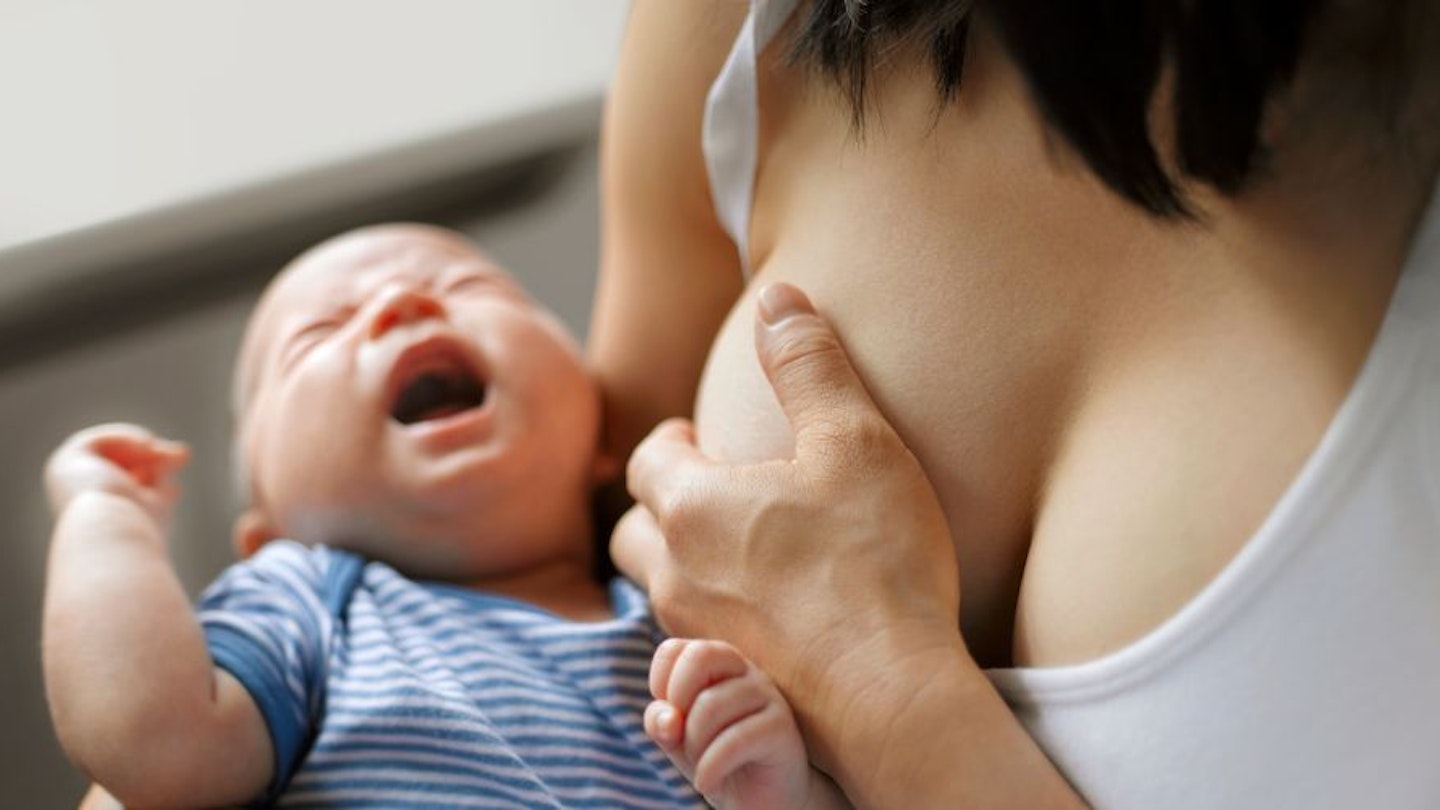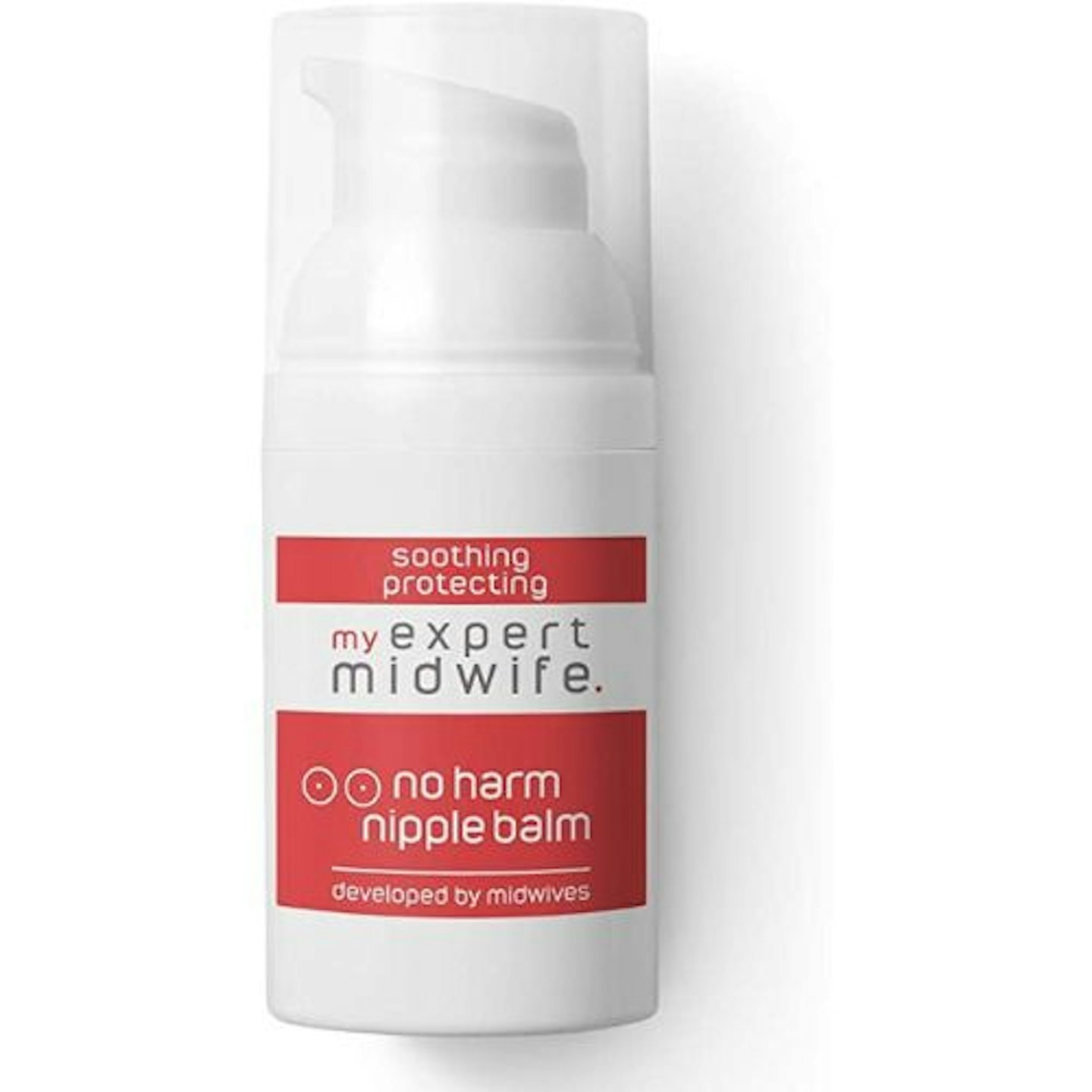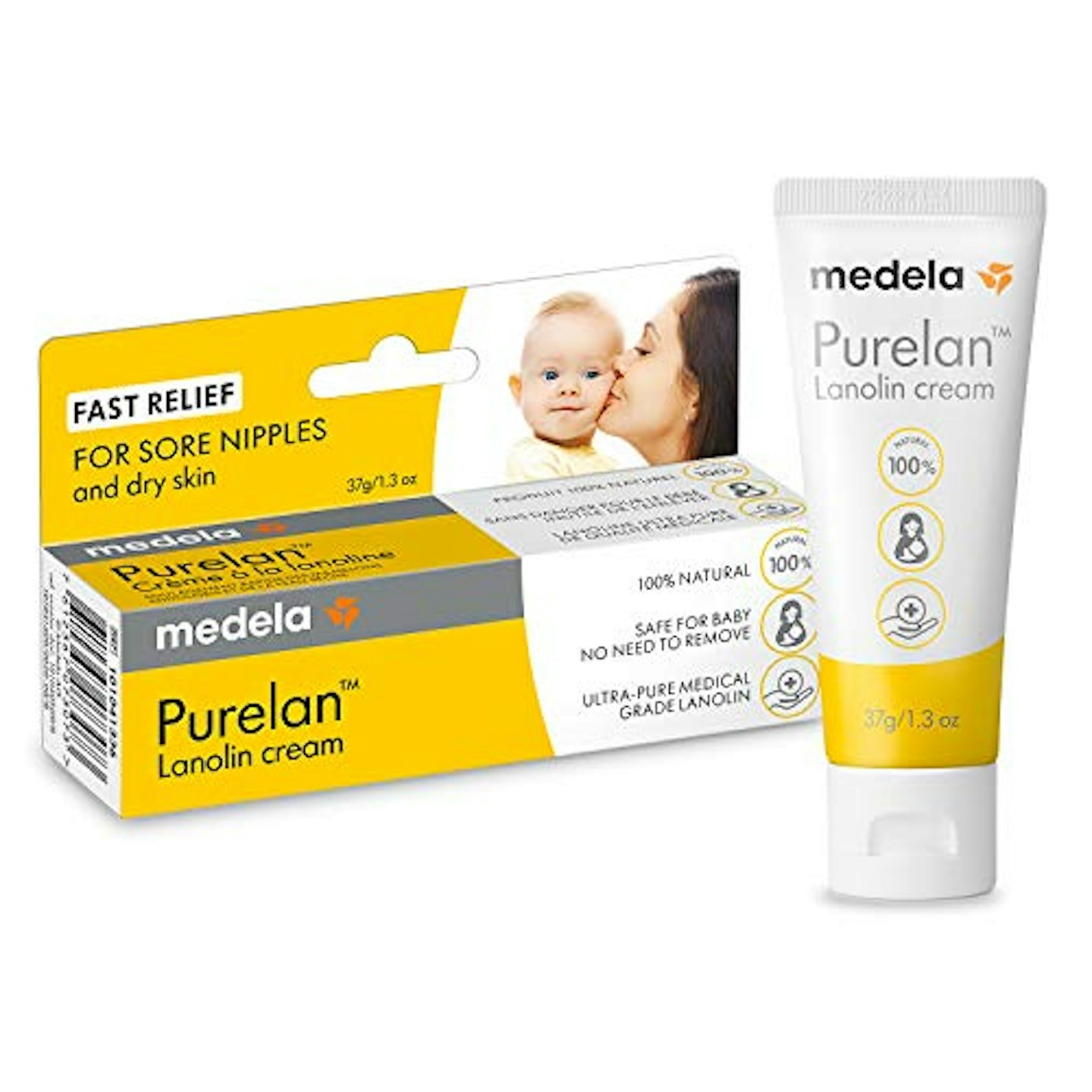One of the main reasons mums might stop breastfeeding is down to nipple pain, which is why the best nipple cream for breastfeeding is a must have for any new mum. While we know that breastfeeding your baby has lots of benefits and is a great way to bond with them, the nipple pain that comes with it can be very hard to cope with. Any mum who has tried breastfeeding will be very familiar with the breastfeeding pain and nipple irritation. Those red raw, cracked, bleeding nipples make you wince harder than you thought you'd ever wince (apart from during the actual birth, obviously) and might make you think about stopping breastfeeding altogether and swapping to bottle feeding.
One of the best ways to soothe sore nipples is a dedicated cream made especially for breastfeeding boobs. Not any old cream or lotion will do, nipple cream is a breastfeeding essential that can help to stop the pain and prevent any itchiness, cracked nipples, and bleeding caused by breastfeeding. It will also promote healing, provide moisturiser for your dry nipples and most are safe for baby too.
When choosing a nipple cream for breastfeeding, there are lots of different factors to consider. Nipple creams have different ingredients and it is important to find one which suits you. You will also want to consider price, especially when there are so many newborn essentials. Nipple creams may also have different levels of absorption which is another thing to consider, along with how easy they are to apply, and also if they can stay on while baby feeds and of course, if they are really effective.
Best nipple creams for breastfeeding at a glance:
• Best overall nipple cream: Lansinoh HPA Lanolin Nipple Cream, £9.99
• Best budget nipple cream: Weleda Nipple Balm, £8
• Best nipple cream for quick absorption: My Expert Midwife No Harm Nipple Balm, £16.50
• Best soothing nipple cream: Motherlove Nipple Cream, £12.09
• Best plant-based nipple cream: My Little Coco Baby Mama Soothing Nipple Cream, £9.50
How to choose the best nipple cream for you
There are a lot of nipple creams to choose from and when you are sore and sleep deprived it can be hard to make a decision as to which is best. We have listed some points to consider below to help you choose.
Price: Nipple creams can range quite widely in price so choose one that fits into your budget.
Effectiveness: Read reviews from other mums and consider what you want the cream to do. Is it for prevention or to promote healing?
Ease of application: Some nipple creams are harder, some greasy and some runnier and this can affect how easy they are to apply and also how messy they are. Also consider if they are packaged in a squeezy tube, a bottle with a pump or just a tub.
Ingredients: Nipple creams sometimes include lanolin, which creates a breathable skin barrier, however, there are many plant-based, natural, or organic nipple creams too.
Absorption: Some nipple creams might be quickly absorbed, while others will remain on the skin for longer.
Cleaning: Check if the cream stains clothes, and if it can be cleaned off easily.
How we chose and tested these nipple creams
Our product recommendations are based on a combination of real-world testing from our burgeoning army of mum testers and the extensive knowledge of our experienced editorial team and product specialists. Where we can, we also consult experts who specialise in the field to ensure you get the right advice along with the right product, and for nipple cream we consulted Rachel Fitz-Desorgher, a specialist midwife and feeding consultant, and we listen to what you say as well.
Our thriving mum community on our Facebook group #mumtribe also often hold great insights as to which products mums really like best and why, helping us highlight the products that meet what you really want.
For the essential products, our annual Mother&Baby Awards shortlist the top products tested, and you can find full reviews from our mum testers provided on the product page. The winners and runners-up for each category then will appear in our top picks article for that product, along with other products that were rated highly by our team.
When it comes to the best nipple cream for breastfeeding, we considered various things such as budget, safety, absorption, ingredients, effectiveness and application.
Nipple Cream safety
Nipple creams are designed to promote healing as well as preventing sore, cracked nipples. However, as with anything that comes into contact with our babies, it is important to understand how safe they are to use. Most nipple creams can be used while breastfeeding, and even left on while baby feeds. Lanolin, a key ingredient in many nipple creams, is safe to use and non-toxic for both mum and baby. However, because it derives from sheep wool, if you have a wool allergy you should avoid using it. Always check the ingredients of any nipple cream to ensure there are no ingredients which might cause an allergic reaction, or may not suit you. The NHS suggests you should also avoid using soap if you have sore nipples because it is drying, as well as wearing cotton bras and using breast pads. Our expert, Rachel Fitz-Desorgher, also advises: "Most creams and ointments are safe to leave on without the need to wash off before a feed but be aware that even so-called hypo-allergenic brands can cause irritation and sensitivity in some mums and babies. If you are found to have thrush or a bacterial infection then your GP will prescribe the most appropriate cream or ointment and explain how to use it."
Rachel also says that nipple cream might make it difficult for your little one to securely latch on and if you are struggling with sore nipples to get help and advice. She says: "They make the nipple and breast slippery and a baby slipping around on the breast can cause bruising and grazes. The baby has no option but to hang on hard to try and stay attached and this can lead to painfully bitten and cut nipples." She suggests, "it is essential to seek help from a trained professional such as a midwife or infant feeding consultant. They will be able to quickly and safely assess why the damage has been caused in the first place and put strategies in place to support healing and prevent further damage. They may take a swab to test for thrush or bacterial infection and examine your baby’s mouth to check for tongue-tie, thrush and other issues which might be at the root of the problem."
Rachel also advises: "Make sure that your bras are comfy, well-fitting and do not have any seams going over your nipples. Wash them in non-biological, un-perfumed laundry liquid and rinse them thoroughly without adding fabric conditioner. If you use breast pads then change them frequently and, if they are washable, launder them immediately the same way as your bras. No cream or ointment is a suitable substitute for a baby being well positioned on the breast during feeds so always consult a specialist infant feeding consultant and get a thorough check and support before using any products on your breasts."
How often should you use nipple cream?
You can use nipple cream as required, however, as a guide, you can apply it after each feed. Simply use a peas size amount and apply it directly to your nipples once your little one has finished feeding. Check the usage instructions for each different nipple cream to ensure you apply the right amount. Also, most nipple creams can be left on when baby feeds and will not need to be wiped off.
Rachel Fitz-Desorgher suggests you might not need to start with nipple cream straightaway, explaining, "in the first few days after birth, whether or not women choose to breastfeed, hormones cause the nipples and areolas to feel warm and tingly - a sensation not dissimilar to friction burn - and many women panic that they are getting sore and damaged when they are not. A check with a midwife or infant feeding supporter can provide reassurance and guidance and simply squeezing out one or two drops of milk after each feed and smearing it over the nipples and areolas has been shown to reduce discomfort during these early days."
Types of nipple cream
You can choose from various types of nipple cream. The main choice to consider are the ingredients and whether you want a nipple cream including lanolin, which is derived from sheep wool. There are all natural nipple creams, completely plant-based nipple creams and also completely organic nipple creams. Ingredients can include beeswax, coconut oil, olive oil and shea butter. You might also want to think about the consistency. Some brands are balms which are thicker and might be sticky, some are creams which might be easier absorbed and thinner, or more lightweight. Alternatively there are thicker nipple butters and also nipple creams which contain oils and therefore could be more greasy.
The best nipple creams 2024
Best overall nipple cream

Lansinoh HPA Lanolin helps soothe and protect sore, cracked nipples. In fact, 99 per cent of mums would recommend HPA Lanolin to other mums*. Our testers like that it is 100 per cent natural and hypoallergenic with no perfume, taste, or additives, plus it is also the only lanolin product to have received the British Allergy Foundation Seal of Approval. There is no need to remove before breastfeeding making it safe for both mum and baby. The only con some mums mentioned was they couldn't get every last drop out of the tube!
*Source: Mum Hub HPA® Lanolin Survey - January 2018. Based on 387 mums.
Award: Gold - Best Product for Breast Feeding (excluding Breast Pumps), Silver - Best New Mum/ Maternity Skincare Products, and Bronze - Best Pregnancy/Maternity Product in the Mother&Baby Awards 2023.
Our mum tester Lorna said: "This product definitely made my life easier as a new mum. It was an easy decision to buy this brand to pop in my hospital bag and I wouldn’t have considered any other brand. The product worked quickly, it was very soothing and really helped to protect sore cracked nipples. When my babies started teething they would sometimes bite when feeding and this product was brilliant if they accidentally caught me. I have also used a little bit of this product on the seams/binding of cloth nappies which helps soften them rubbing against my baby's skin."
Read our full Lansinoh HPA Lanolin Nipple Cream review
Pros
- No smell or taste
- Can be used while breastfeeding, without wiping off
Cons
- Difficult to get the last bit of product out of the tube
| Size: | 40ml |
| Key ingredients: | Lanolin |
| Can be left on while feeding: | Yes |
- Contains lanolin
- Can be left on while feeding
- No taste or smell
- BPA free
- Hypoallergenic
Best budget nipple cream
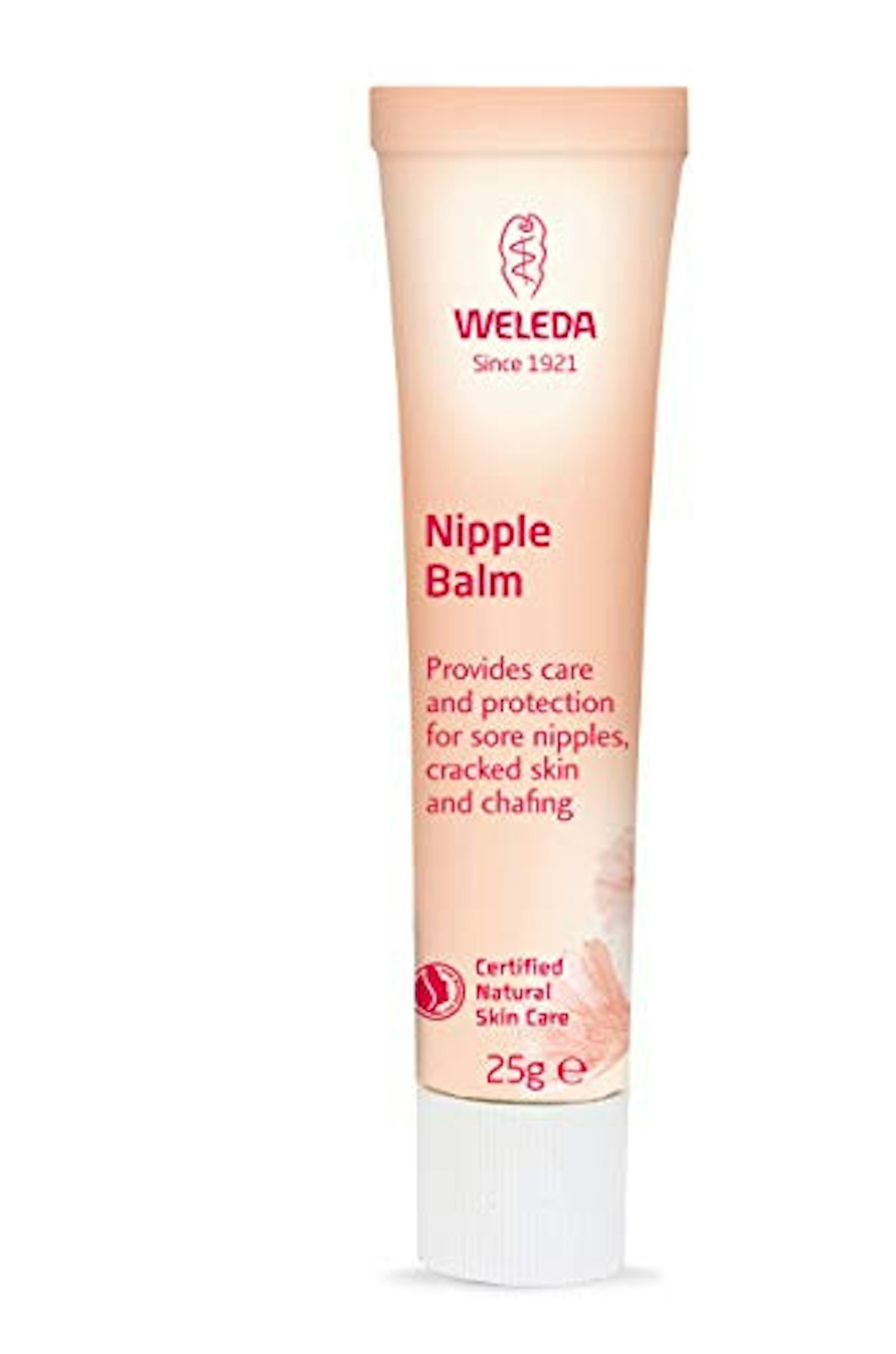
Weleda is a much-loved brand because of its use of natural ingredients. The Nipple Balm is made with organic calendula, nourishing plant oils, and protective waxes, as well as lanolin. As one of the best nipple creams, it is very easy to apply and doesn’t need to be removed before feeding. We also liked the reasonable price of this nipple balm.
It was Shortlisted in the 2019 Mother&Baby Awards in the Best Product for Breastfeeding (excluding breast pumps) category.
Tested by mum Louise for the 2019 Mother&Baby Awards; she said: "It felt like more of a treat to use this product because of the lovely, premium packaging and the texture. It isn't embarrassing to leave it out for others to see or keep handy in your handbag as it is such nice packaging."
Pros
- Developed by midwives and pharmacists
- Natural ingredients
Cons
- Sticky formula
| Size: | 25g |
| Key ingredients: | Beeswax, lanolin, calendula extract |
| Can be left on when feeding: | Yes |
- Includes lanolin, beeswax and calendula extract
- Easy to apply
- Discreet packaging
- Tasteless
Best nipple cream for quick absorption
No Harm Nipple Balm from My Expert Midwife comes with two significant advantages: an airless pump ensuring excellent hygiene and using less of the product, as you only need to pump twice to get all the quantity you need. Plus we like how easy the pump is to use when holding a baby too! This nipple cream has soaks in quickly, plus it is 100% natural so you don't have to wipe it off before feeding. It can be a little runny though.
It was Shortlisted in the Mother&Baby Awards 2019 in the Best Product for Breastfeeding (excluding breast pumps) category.
Tested by mum Amy for the 2019 Mother&Baby Awards: "It gives instant relief when applied and also prevented cracked nipples occurring again. It is easy to apply and does not impact on feeding. The design is a dispenser which allows you to pump a small amount out to reduce wastage. Although it is more expensive, you get more applications out of it and there is less waste."
Read our full No Harm Nipple Balm review
Pros
- Brilliant bottle pump design
- Pleasant smell
Cons
- Consistency a little runny
| Size: | 30ml |
| Key ingredients: | Lanolin, coconut oil, sweet almond oil |
| Can be left on when feeding: | Yes |
- Tasteless and odourless
- Natural ingredients
- Soothing serum
- Midwife-developed
- Moisturising
Best soothing nipple cream
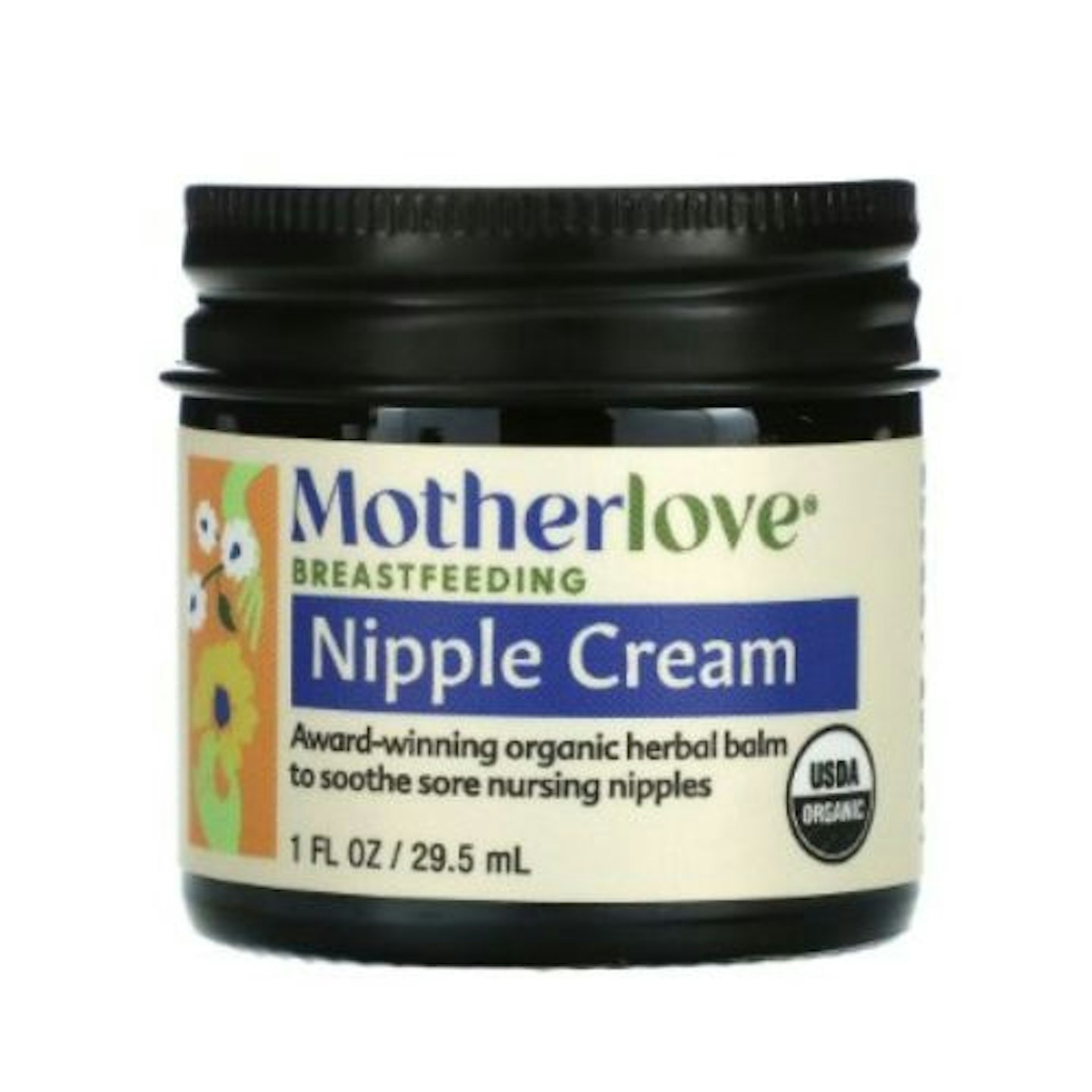
uk.iherb.com
Motherlove Nipple Cream only uses certified organic ingredients: extra virgin olive oil, beeswax, shea butter, marshmallow root, and calendula flower. Because of this, it's safe for your baby to ingest, so you don't need to clean your nipples before breastfeeding or after application. We liked that you can also use it as a nappy rash cream.
A verified reviewer commented: "Saved my nipples! I just started breastfeeding, unfortunately, my nipples were cracked and even growed a blister. Everytime I put on breastmilk and the cream then cover it with plastic, it really soothed the pain sped up the healing. Baby is ok with the smell as well."
Pros
- Smooth texture to apply
- Natural ingredients
Cons
- Some mums didn't like the smell
| Size: | 29.5ml |
| Ingredients: | Olive oil, beeswax, shea butter, marshmallow root, calendula |
| Can be left on while feeding: | Yes |
- Natural organic ingredients
- Can be used as nappy cream
- Lanolin free
- Smooth texture
Best plant-based nipple cream
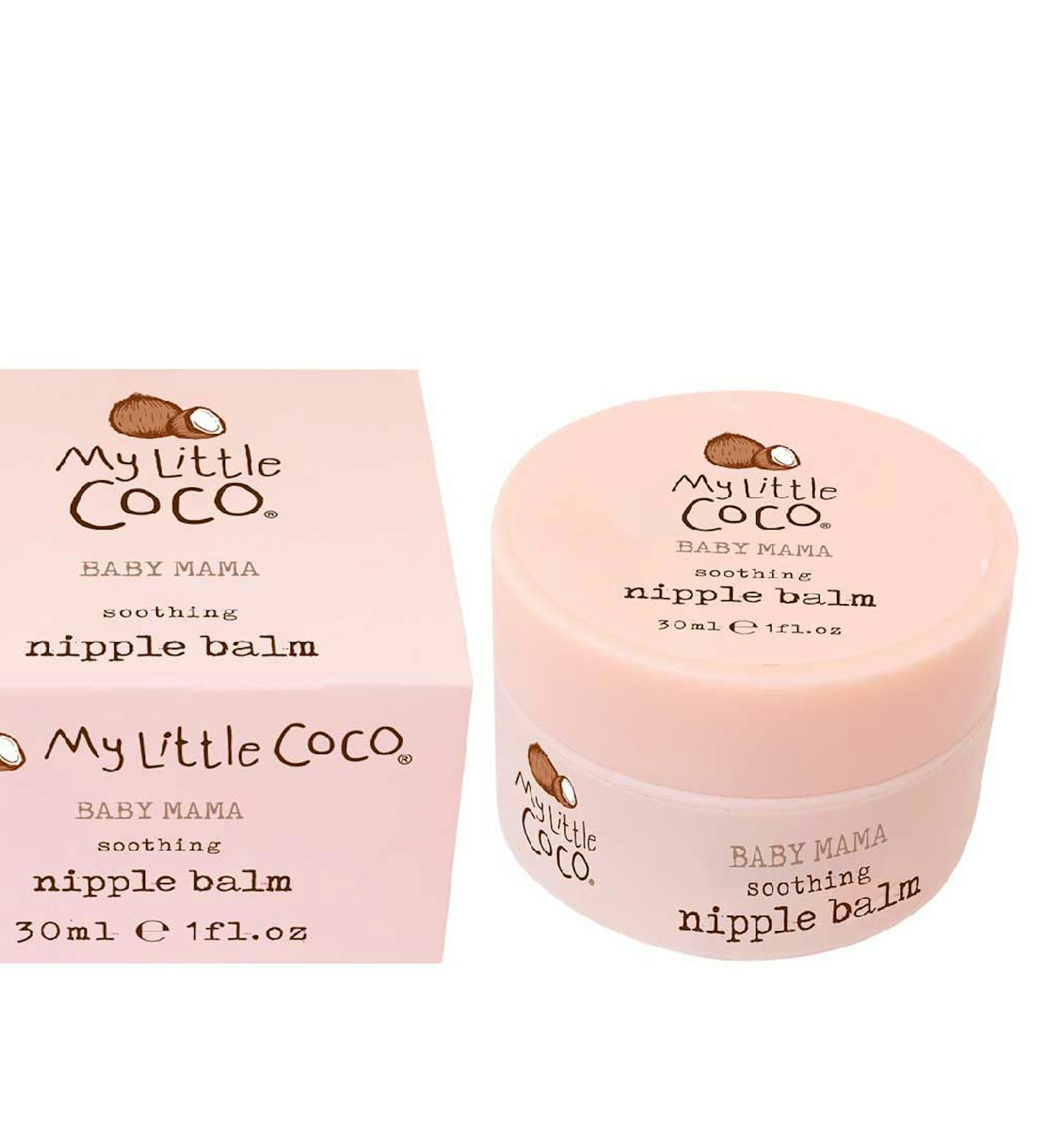
mylittlecoco.co.uk
Expertly blended with nourishing organic coconut oil, this beautifully soft, plant-based alternative nipple balm is designed to hydrate and soothe your nipples throughout pregnancy and breastfeeding We like that you can use it during the last trimester to prepare your nipples for breastfeeding.
It's quite a solid consistency, so we recommend placing it in a sunny spot or warmer part of your room before use, to loosen it up a bit.
A trusted reviewer said: "I've only been using this since it came out and after first use, it soothed and healed my cracked/chapped nipples. I found it easier to apply than others and will be buying it again."
Pros
- Pleasant smell
- Non greasy texture
Cons
- Balm is a hard consistency at first until it melts
| Size: | 30ml |
| Ingredients: | Coconut oil |
| Can be left on while feeding: | No |
- Uses natural ingredients
- Easy to apply
- Can be used in pregnancy
- Hydrates and soothes
Best pure lanolin nipple cream
Like Lansinoh Breastfeeding Salve, Medela's Purelan lanolin cream is thick enough to soothe and protect even the most cracked and sore nipples. It's a smooth cream made using natural ingredients, including medical grade lanolin, so it is totally safe for your baby meaning you don't have to remove it before feeding. We also like how the cream helps reinforce your skin's natural barrier properties.
It can get a bit sticky in texture if the tube gets warm, so if you'd prefer something silkier we'd recommend Motherlove Nipple Cream.
It won Silver in the 2020 Mother&Baby Awards Best New Mum/Maternity Skincare Product category.
Tested by mum Jade for the 2020 Mother&Baby Awards: "Breastfeeding has caused my nipples to become quite sensitive and within a few days of using this balm, it relieved a lot of the discomfort. Due to the balm also being fairly small then it has allowed me to carry it in my bag, meaning I can also use it when on the go."
Read our full Medela PureLan 100 review
Pros
- Can be used for other patches of dry skin
- Affordable
Cons
- Sticky formula
| Size: | 37g |
| Key ingredients: | Lanolin |
| Can keep on while feeding: | Yes |
- 100% pure lanolin
- Can be kept on while feeding
- Can be used on any areas of dry skin
- Soothes and protects
Best moisturising nipple cream
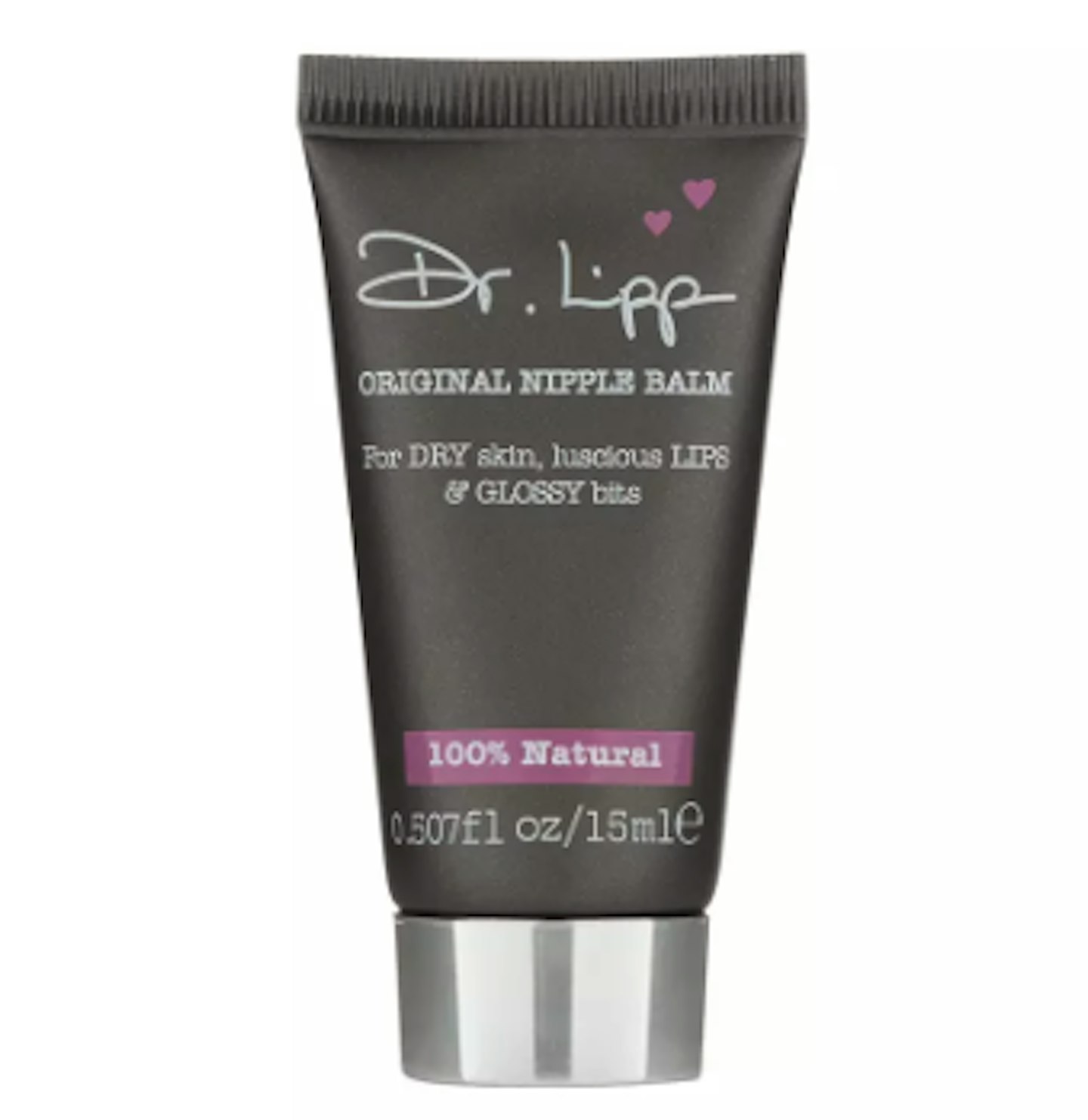
www.feelunique.com
This product is multi-award winning and famous for its long-lasting moisture and glossy effect. Made with 100 per cent pure medical grade Lanolin, we like that you can use it not only for sore nipples when breastfeeding but also for almost anything you want to keep moisturised.
It would be great if it came in a larger tube, though a little does go a long way.
Review: "Have been using this product for years and absolutely adore it. If you're looking for something thick, non-sticky and long lasting then Dr Lipp is the balm for you. The price may seem steep for such a small tube but the product lasts for months."
Pros
- Ideal for lips and nipples
- Lasts for hours
Cons
- A very small tube
| Size: | 15ml |
| Key ingredients: | Lanolin |
| Can be left on when feeding: | Not stated |
- 100% medical grade lanolin
- Can be used on nipples and lips
- Moisturising
- Healing
Best natural nipple cream

This cream is lanolin-free and contains all-natural ingredients like calendula flower extract and olive oil. Our testers liked how versatile this nipple butter is, you can use it not only for soothing boobs but also for dry heels, cradle cap, and chapped lips too.
It's only a small tin so we'd recommend purchasing a couple to keep beside your feeding chair, in your changing bag and wherever else it may come in hand.
A trusted reviewer said: "Natural simple ingredients. This butter kept my skin soft and soothed when I started breastfeeding and my skin was adapting to baby. It's also great to put on baby's/your lips to avoid chapping. Its smells like dark chocolate and doesn't leave you feeling greasy, must be pretty easy for skin to absorb. You also don't need a lot so it lasts ages."
Pros
- Natural ingredients
- Multiple uses
Cons
- Small tin
| Size: | 60ml |
| Key ingredients: | Beeswax, olive oil, cocoa seed butter, shea butter, mango seed butter, calendula |
| Can be left on while feeding: | Yes |
- Natural ingredients
- Lanolin free
- Nice smell
- Quickly absorbed
- Multiple uses
Best nipple cream for easy application
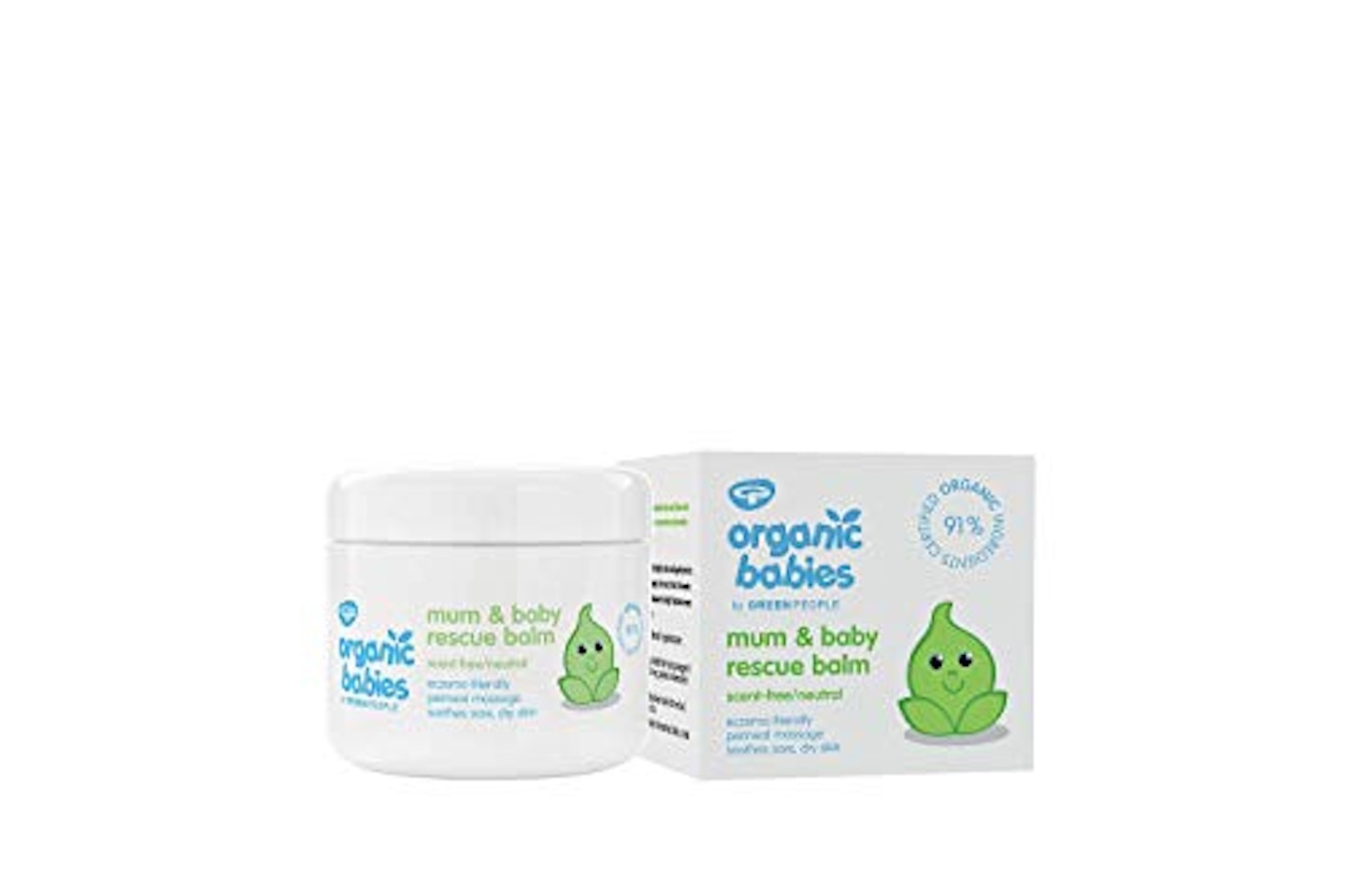
Green People Organic is well known due to using organic ingredients. In this rescue balm, you can find organic calendula and vitamin E to soothe sore, cracked nipples before and after breastfeeding. Other ingredients are organic shea butter, organic sunflower, sweet almond, and hemp seed oil which our testers loved.
It won Silver in the 2017 M&B Awards in the Best Baby Skincare Range/Product category.
Tested by mum Kasia Mallett for the M&B Awards 2017: "I really love this product. It smells lovely, is very easy to apply, makes my children's skin soft and has already, after only three days, helped with my youngest daughter's eczema and my son's dry skin. My eldest daughter, who is five, likes it so much that she has been inventing 'dry bits' to rub it into!"
Read our full Green People Organic Babies Mum & Baby Rescue Balm review
Pros
- Easy to apply
- Natural ingredients
Cons
- Some mums didn't like the scent
| Size: | 100ml |
| Ingredients: | Calendula, hemp, beeswax, shea butter |
| Can be left on while feeding: | No |
- Natural, organic ingredients
- Can be used for perineal massage in pregnancy
- Softens skin
- Suitable for sensitive skin
Best healing nipple cream
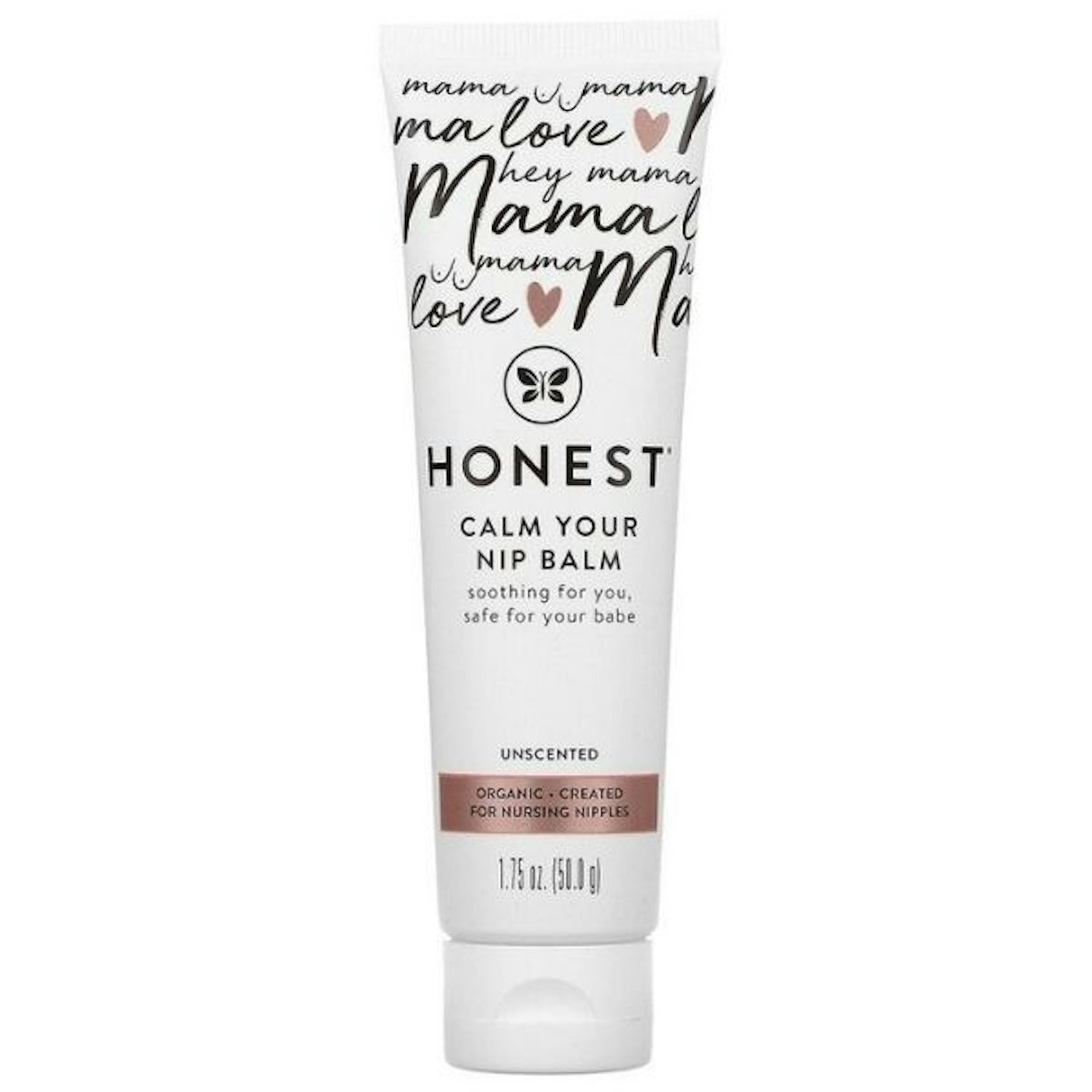
www.onbuy.com
Rich in organic ingredients, the Honest nipple cream harnesses the power of coconut oil and shea butter for some long-lasting relief from nipple soreness. It'll ease pain, remedy cracks and make you feel more comfortable which our testers loved. The ingredients are natural and completely safe for your little one too - so no need to worry about wiping off your boobs before breastfeeding.
A verified reviewer commented: "Hands down the best nipple balm I have ever used. This formula is so nice because it heals and soothes but doesn't have the Vaseline type feel that I have experienced in the past with other brands. This is a must have for breastfeeding mamas! Best of all, the baby didn't care about it at all. I fed him about an hour after applying and no weird faces or problems feeding at all!"
Pros
- Multiple uses
- Pleasant, natural smell
Cons
- Poor quality packaging
| Size: | 50g |
| Ingredients: | Coconut oil, beeswax, jojoba seed oil |
| Can be left on while feeding: | Yes |
- Natural ingredients
- Can be left on while feeding
- Not tested on animals
- Soothing
What does nipple cream do?
Nipple cream replaces the natural moisture in the skin to prevent your nipples from drying out, and becoming cracked and sore. It can also create a natural moisture barrier for your skin to help soothe and protect it. You can start to use nipple cream when pregnant to prepare your nipples for breastfeeding.
However, Rachel Fitz-Desorgher reminds us that it is not always necessary explaining: "Nipples are highly evolved over millions of years to be just perfect for the job of breastfeeding. The skin of the nipples is of a type that can withstand regular and prolonged periods of suckling and feeding and is wrinkled so that they can be safely stretched and pulled during feeds without coming to harm." She continues, "nipples and breasts need no preparation at all in advance of baby being born and they come with their own built-in moisturising system to help prevent, soothe and, if necessary, heal any little nicks and grazes once baby is here and breastfeeding gets started."
Nipple cream also has multiple other uses as well. Some can also be used as nappy creams, as well as lip balms and for any areas of troublesome dry skin.
Is nipple cream safe when breastfeeding?
Yes, nipple cream is designed for women to use when they're breastfeeding. Therefore, it is safe to use all through the breastfeeding period. Having said that, it's always best to double-check the label before using one. This is to ensure your cream of choice is made from all-natural ingredients that are safe for you and your little one.
Most of these creams are composed of lanolin, an oily substance that's secreted from sheep's skin. However, there are also plant-based creams if you want to avoid using animal products.
Do I need to wipe nipple cream off before feeding?
Most nipple creams are made from ingredients that are safe for your baby and therefore do not need to be wiped off before feeding. However, check the individual instructions on your chosen nipple cream to ensure it can be left on before you feed your baby. Some nipple creams do state they need to be wiped off before feeing.
Lanolin vs lanolin free nipple cream - which is best?
It is a personal choice. Lanolin is derived from sheep so if you are uncomfortable with using an animal product, or you have an allergy to wool, you should choose a plant-based nipple cream. It is thought lanolin creates a protective barrier on your skin to protect and soothe it, as well as moisturising, however, plant ingredients such as coconut oil, beeswax and olive oil should do the same.
When should I start using nipple cream during pregnancy?
Each mum is different when it comes to when they decide to start using nipple cream. While some choose to start using nipple cream during the final trimester to prepare their nipples for feeding, others start using it as soon as baby is born when they begin to feed.
This is a totally personal decision and is entirely up to you. Your boobs and nipples will change a lot during your pregnancy, and some mums experience dry nipples before they give birth so in these cases, a nipple balm can provide some relief.
When should I apply nipple cream?
This is completely up to you, but it is generally recommended to apply nipple cream right after feeding. This is so that the formula can be absorbed into your skin and work its magic before your next feed. Rachel Fitz-Desorgher advises, "if you do decide to use a cream or ointment then use no more than a tiny smear over your nipples, avoid getting it over the breast tissue and only apply it after feeds."
Is nipple cream essential?
Even though many mums find nipple creams help with moisturising and healing, "there is, as yet, no scientific basis for using creams, ointments or lotions to speed up or improve healing of damaged nipples" according to our expert, Rachel Fitz -Desorgher. You can moisturise and heal by using your own breast milk, and Rachel advises, "simply keep nipples and areolas lightly moistened and oiled by expressing one or two drops of milk after feeds and lightly smear it over the nipples and areolas". So you may not find you need to use nipple creams as breast milk produces "a moisturising serum which not only keeps nipples soft and supple but also emits a smell that is particularly enticing for babies, leading them to the right place and stimulating their appetite. This amazing serum also helps to prevent infection and, very importantly, by being a little ‘grippy’, it helps baby to anchor securely onto the breast." However, you may find that nipple creams are essential product for you and help heal any soreness, or keep your nipples moisturised.
About the expert
Rachel Fitz-Desorgher is a baby and parenting expert and mother’s mentor. She has four grown-up sons and two grandchildren. Rachel worked as a specialist midwife, infant feeding consultant and parenting consultant for over 30 years before deciding to leave midwifery in order to focus her expertise and experience on mentoring women transitioning from the busy world of work to motherhood.
This article was written by Commercial Content Editor, Sophie Knight. Sophie is a journalist and mum of two, and previously edited motherandbaby.com. She is passionate about raising awareness around postnatal depression and is a Mental Health First Aider.
